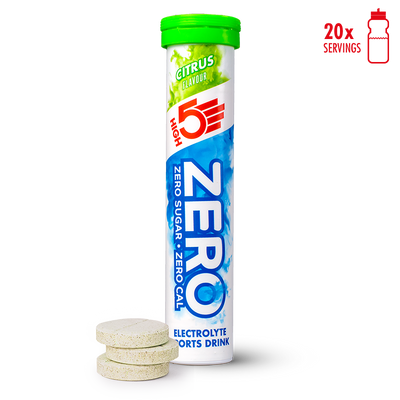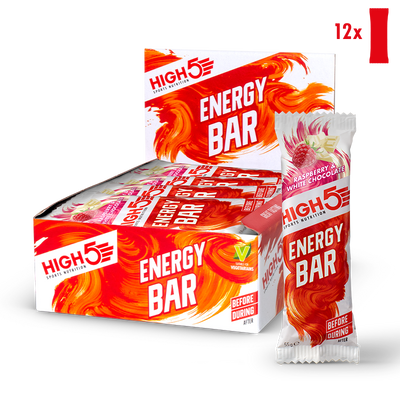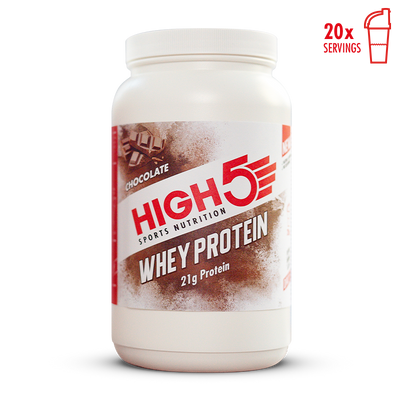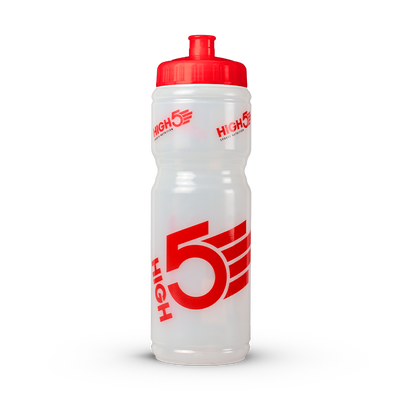Have you ever experienced a sudden tightening in your calf muscles during exercise?
Imagine gearing up for a race and feeling confident about your ability, but just when you’re hitting your stride, a leg cramp forces you to stop in your tracks. You’re not alone; about 40% to 95% of all athletes experience muscle cramps at some point. While this can be inconvenient and frustrating, there are several ways to manage and prevent this condition.
This guide outlines several approaches to help you understand how to stop cramps as an athlete so you can enjoy your favourite sporting activities without discomfort.
Article Summary
Dealing with muscle cramps, particularly in the legs, can disrupt any athlete's performance. Here's a concise guide how to stop cramps fast:
- Cramp Basics: Muscle cramps, such as leg or calf cramps, are often caused by dehydration, muscle fatigue, or electrolyte imbalance, leading to sharp pains.
- Quick Fixes: To alleviate cramps, stretch the affected muscle, massage gently, and hydrate. For calf cramps, stretching the leg and pulling toes upward can offer relief.
- Prevention Tips: Stay hydrated and maintain electrolyte balance to prevent cramps. Drinking sports drinks can replace lost fluids and electrolytes.
- Dietary Measures: A balanced diet rich in potassium, magnesium, and calcium, along with adequate hydration, supports muscle health and prevents cramps.
- HIGH5 Hydration: HIGH5's electrolyte drinks are formulated to help athletes stay hydrated and prevent muscle cramps by replenishing essential nutrients lost during exercise.
Adopting these strategies can help athletes reduce the risk of muscle cramps and enhance their performance.
Understanding Leg Cramps: Causes and Contributing Factors
A muscle cramp (or charley horse) is an involuntary contraction of one or more leg muscles that is often accompanied by a sharp, stabbing pain. Leg cramps can occur at any time, but they are most common during or after exercise or at night while sleeping.
To understand how to prevent cramping as an athlete, let’s first consider its causes and risk factors.
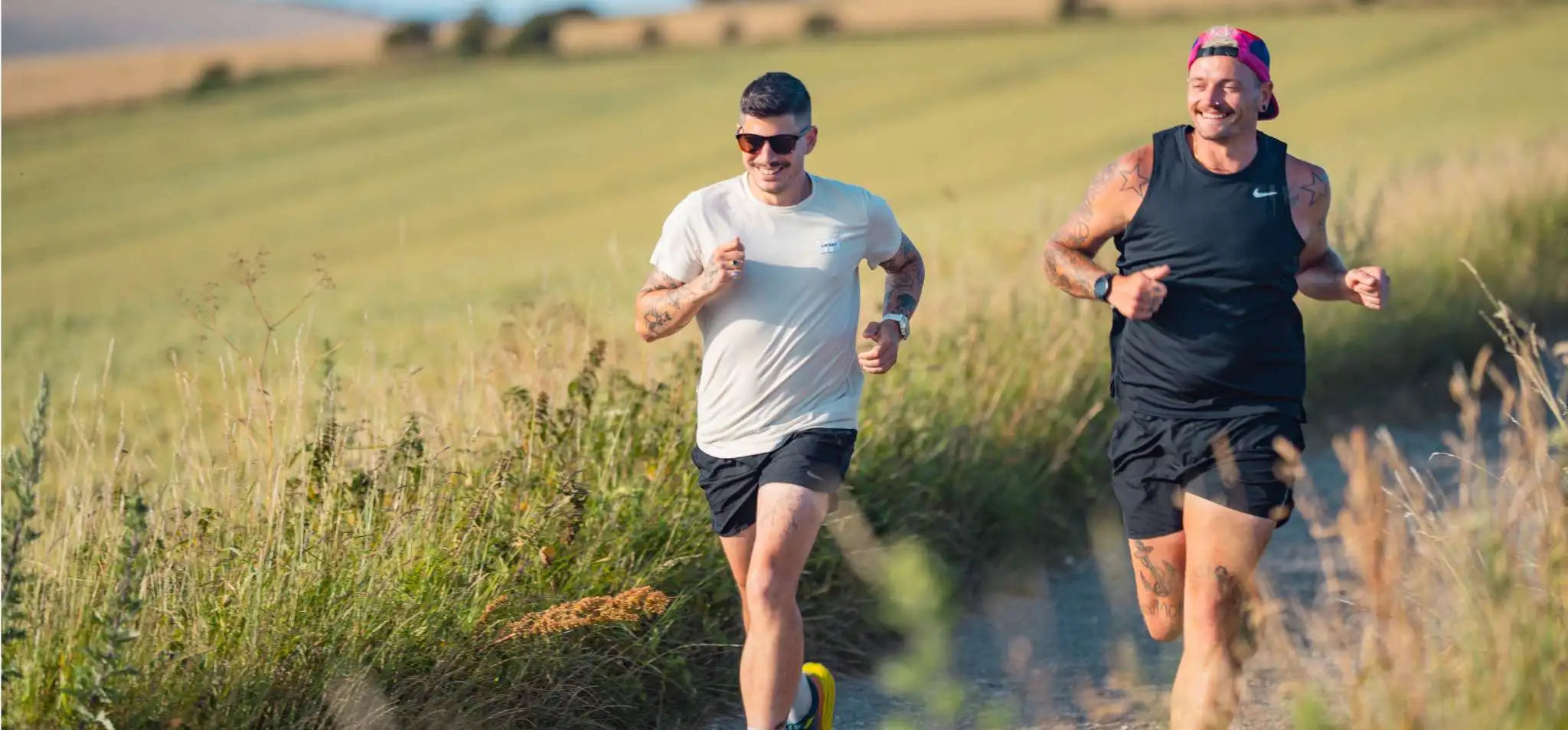
5 Major Causes of Leg Cramps
The primary triggers for leg cramps are:
- Dehydration: When you sweat, you lose fluids and electrolytes, such as sodium and potassium. These electrolytes are important for muscle function. When depleted, you may experience dehydration symptoms like an increased likelihood of muscle cramps.
- Muscle Fatigue: Fatigued muscles are more likely to cramp, as they’re less able to absorb calcium, which is important for muscle contraction and relaxation.
- Electrolyte Imbalance: An imbalance of electrolytes, such as sodium and potassium, can also lead to leg cramps. This can happen if you sweat a lot or if you don’t eat enough foods that contain these electrolytes.
- Medications: Certain medications, such as diuretics and statins, can also increase the risk of leg cramps.
- Medical Conditions: Some medical conditions, such as diabetes, kidney disease, and thyroid problems, can also make you more likely to experience leg cramps.
3 Contributing Factors to Leg Cramps in Athletes
In addition to the general causes of leg cramps, several factors can contribute to an increased risk in athletes, including:
- Type of Sport: Athletes who participate in certain sports, like running, jumping, and kicking, are more likely to experience exercise-associated muscle cramps. These sports are known to put a lot of stress on the muscles of the legs, triggering the condition.
- Training Load: Athletes who train hard or for long periods are also more likely to experience leg cramps. Notably, the increased training load can lead to muscle fatigue and electrolyte imbalance. i.e., you sweat more and lose more electrolytes and essential nutrients during vigorous training.
- Environmental Factors: Athletes who exercise in hot and humid conditions are also more likely to experience leg cramps, as they’re more likely to become dehydrated and lose electrolytes through sweat.
How to Stop Leg Cramps Immediately
To stop leg cramps immediately, start by stretching the cramped muscle and rubbing it gently. To stop a cramp in the calf, straighten the leg, then pull the top of the foot on the cramped side towards your face. Additionally, try to stand on the cramped leg with your full weight, maintaining firm contact between the foot and the floor. This technique is applicable for stopping a cramp in the back of the thigh as well.
Overall, the most important thing is to stop and stretch the affected muscle as soon as possible, and here are a few tips:
- Stretch the muscle:
If you have a cramp in your calf muscle, do the following:
- Stand facing a wall and place your hands on it at shoulder height.
- Step back with one leg and keep your heel on the ground.
- Keeping your back leg straight, lean forward until you feel a stretch in your calf muscle.
- Hold for 30 seconds and repeat on the other side.
Here’s how to stretch your muscle following a cramp in your hamstring muscle:
- Sit on the ground with your legs extended before you.
- Bend forward from the hips until you feel a stretch in your hamstrings.
- Hold for 30 seconds and repeat.
- Massage the muscle: You can also try massaging the cramped muscle. This can help to relax the muscles and relieve the associated leg pain.
- Drink fluids: Dehydration can contribute to leg cramps, so it’s important to drink enough water or use sports drinks when you experience a cramp during a race.
If the cramp is severe or doesn’t resolve after a few minutes, you may need to discontinue your racing/cycling/workout event to avoid increasing your risk of injury.
How to Prevent Cramping By Staying Hydrated
To ensure a comfortable and cramp-free workout experience, it’s essential to know some cramp-prevention techniques. Hydration plays a pivotal role in this, so remember to drink plenty of water and an electrolyte drink like HIGH5's Zeros before, during, and after exercise. Electrolyte drinks from HIGH5 or cramp tablets provide the ideal balance of electrolytes to help prevent dehydration and restore nutrients lost through sweat.
Hydration Hacks: 4 Fluid Intake Tips to Stop Cramps
As an athlete, your fluid needs are higher than average, so you have to make a conscious effort to take in enough water and electrolytes.
Here are some hydration hacks to help prevent cramps:
- Drink early and often: Don’t wait until you’re thirsty to have a drink — by then, you’re already dehydrated. Aim for 120–180 mL of water every 15–20 minutes during exercise. For long training sessions or events, you may need an electrolyte replacement like HIGH5 Zero to replenish what you’re losing in sweat.
- Track your intake: Use a hydration tracker app or mark down how many mL you consume. Also, consider setting daily and weekly goals to stay on track. Most athletes need a minimum of 2.3 L per day and need more when running in hot weather or at high intensities. A good rule of thumb is to drink 30 mL per kg of your body weight.
- Choose electrolyte-rich foods: In addition to drinking water and sports drinks, eat foods that provide electrolytes, like bananas, avocados, leafy greens, nuts, and seeds. These electrolytes have many benefits, including coordinating proper leg muscle and nerve function. A deficiency can lead to cramps, spasms, and other issues.
- Soak in an Epsom salt bath: Epsom salt (magnesium sulphate) helps relax muscles and reduce inflammation. Soaking in a warm bath with 500 grams (2 cups) of Epsom salt for at least 12 minutes can help prevent leg cramps and relieve discomfort from existing cramps. In particular, the magnesium content permeates your skin to provide quick relief.
Electrolytes 101: Balancing Minerals to Avoid Cramps
As an athlete, balancing your electrolytes is key to understanding how to avoid cramps in your legs. Electrolytes are minerals in your body that carry an electric charge, including sodium, potassium, calcium, and magnesium. When these minerals experience an imbalance due to dehydration or nutritional deficits, your muscles can experience sudden tightening. By staying properly hydrated and consuming electrolyte-rich foods, you can help keep cramps at bay.
In addition to hydrating yourself with an Electrolyte drink, here are some other lifestyle changes to balance your body electrolytes:
- Eat potassium-rich foods: Potassium works with sodium to maintain fluid balance and muscle function. Bananas, sweet potatoes, beans, and leafy greens are excellent sources. Female athletes should aim for 2,600 mg per day, while males should target 3,400 mg per day. However, ensure you balance your potassium intake with sodium, as too much sodium and little potassium intake has been linked to an increased cardiovascular disease risk.
- Focus on magnesium: Magnesium helps relax your muscles and nerves. Load up on foods like spinach, Swiss chard, black beans, avocado, yoghurt, or nuts. The recommended daily amount is around 400–420 mg for most adult males and 310–320 mg for females. Magnesium supplements and Epsom salt baths are alternative means of meeting your daily magnesium intake requirements.
- Don’t forget calcium: In addition to its bone health benefits, calcium helps conduct coordinate muscle contractions and transmit nerve signals. Dairy products, sardines with edible bones, dark leafy greens, and tofu are excellent sources of the mineral. Most adults need around 1,000 to 1,300 mg per day.
- Consider supplements: If you can’t achieve substantial electrolyte intake via diet, consider anti-cramp tablets or powders to help restore balance. Look for products containing sodium, potassium, magnesium, and calcium. Ensure you properly follow the directions as stated and talk to your doctor before taking any supplement.
By staying hydrated and consuming natural electrolyte-rich foods and supplements when needed, you can get the minerals you need to keep your muscles firing correctly and prevent cramps. Experiment with different diets, electrolyte drinks for leg cramps, and supplements to find the right balance for your activity level and sweat rate.
How to Prevent Cramping With Assisted Stretching
In addition to the above preventative techniques, assisted stretching is a great way to help prevent leg cramps. In assisted stretching, a partner or stretching prop helps you reach a deeper stretch than you could on your own. This can help loosen tight muscles and improve flexibility.
Here are a few assisted stretches that can help prevent leg cramps:
- Calf Stretch:
- Stand facing a wall with your hands placed on it at shoulder height.
- Step back with one leg and keep your heel on the ground.
- Keeping your back leg straight, lean forward until you feel a stretch in your calf muscle.
- Hold for 30 seconds and repeat on the other side.
- Hamstring Stretch:
- Sit on the ground with your legs extended before you.
- Loop a resistance band around the balls of your feet and hold the ends in your hands.
- Keeping your back straight, lean forward from the hips until you feel a stretch in your hamstrings.
- Hold for 30 seconds and repeat.
- Quadriceps Stretch:
- Stand facing a chair with your hands on the back of the chair.
- Bend one leg behind you and grab your foot with your hand.
- Pull your heel towards your buttock until you feel a stretch in the front of your thigh.
- Hold for 30 seconds and repeat on the other side.

Valuable Tip: You can also use a foam roller to perform assisted stretches. Foam rolling is a self-massage technique that can help release muscle tension and improve flexibility.
- To foam roll your calves:
- Sit on the ground with your legs extended before you.
- Place the foam roller under your calves and slowly roll back and forth, applying pressure as needed.
- Hold for 30 seconds and repeat.
- To foam roll your hamstrings:
- Sit on the ground with your legs extended before you and bend one leg behind you.
- Place the foam roller under your hamstring and slowly roll back and forth, applying pressure as needed.
- Hold for 30 seconds and repeat on the other side.
- To foam roll your quadriceps:
- Kneel on the ground with one leg in front of you.
- Place the foam roller under your quadriceps and slowly roll back and forth, applying pressure as needed.
- Hold for 30 seconds and repeat on the other side.
4 Tips for Assisted Stretching
Here are tips on how to prevent cramps in your legs and obtain the best results via assisted stretching:
- Warm up before exercise: This helps prepare your muscles for workout activity and reduces your risk of injury, including cramping.
- Cool down after exercise: This helps your body to recover from exercise and prevents muscle fatigue. A good way to replenish your energy after exercise is to refuel with a HIGH5 Recovery Drink.
- Get enough rest: Make sure to get at least 7–8 hours of sleep per night. This will give your muscles time to repair and recover, preventing nocturnal leg cramps.
- Eat a healthy diet: Eating a healthy diet helps ensure you’re getting the nutrients your body needs to function properly, including electrolytes and minerals that help in preventing leg cramps.
Nutrition and Dietary Approaches to Leg Cramp Prevention
The foods you consume can also influence your risk of developing leg cramps. Particularly, aim for a balanced diet with plenty of nutrients that will benefit your muscles and help prevent cramps.
The following tips can help you select a diet that reduces your risk for cramps:
- Consume lean proteins like fish, eggs, and legumes: They provide amino acids that are essential for muscle health.
- Focus on healthy fats from olive oil, nuts, and avocados: Omega-3 fatty acids, in particular, help reduce inflammation.
- Incorporate antioxidant-rich fruits and vegetables like berries, cherries, spinach, and beets: These help combat free radical damage in muscles.
- Limit caffeine and alcohol intake: These can contribute to dehydration and electrolyte imbalance.
If you seek how to prevent cramps at night or during a workout, adhering to these nutritional tips is a great approach. By making proper nutrition and hydration choices tailored to your individual needs and activity levels, you can reduce your risk of developing leg cramps!
Frequently Asked Questions
What drink stops cramps?
The best drink to help stop cramps is one that replenishes electrolytes, like an electrolyte drink or a beverage rich in potassium and magnesium, such as a banana smoothie. It’s best to opt for electrolyte formulas with zero added sugars, like HIGH5 Zero.
How do I stop cramps at night?
To stop cramps at night, perform gentle muscle stretches before sleeping. Alternatively, ride a stationary bike or do a treadmill walk for a few minutes daily. Also, ensure sheets and blankets are loose around your feet, and opt for shoes that aren’t too tight on your feet during the day.
How should I sleep with cramps?
The best way to sleep with cramps as a back sleeper is to use pillows that orient your toes forward. Stomach sleepers should try hanging their feet over the bed’s edge. Overall, ensure you perform muscle stretches before going to bed.
Why do cramps hurt most at night?
Cramps often hurt more at night due to muscle fatigue and dehydration. Staying hydrated, stretching, and using heat therapy can alleviate discomfort from night leg cramps as well as associated conditions like restless legs syndrome (RLS).
Conclusion
Now you know how to stop cramps, take control of your leg health and make the changes needed to help manage your cramping issues, it’s important not to forget to stay hydrated, stretch regularly, and balance your electrolytes with nutritional foods and a healthy lifestyle. What better way to start making those changes than with electrolyte supplements from HIGH5? In addition to these strategies for stopping and preventing cramps, understanding how to manage and overcome heavy legs for better runs can further enhance your running experience, ensuring you maintain your pace and enjoy your workouts without the setback of heavy legs.

